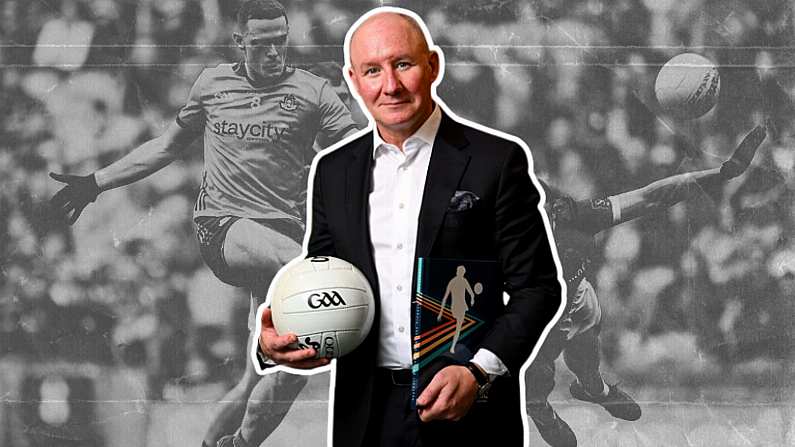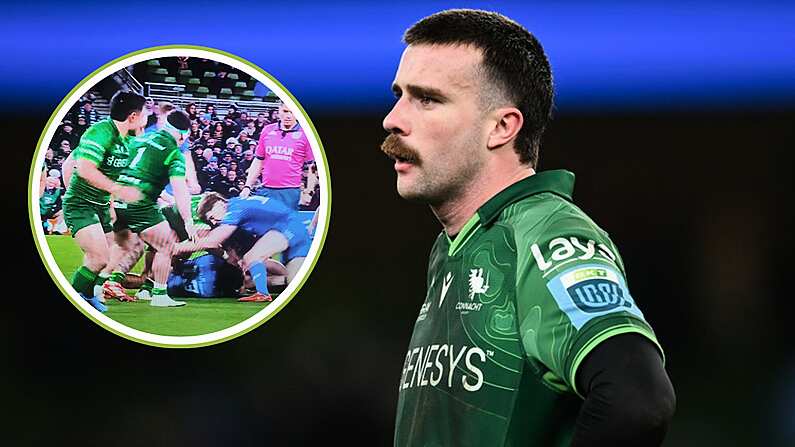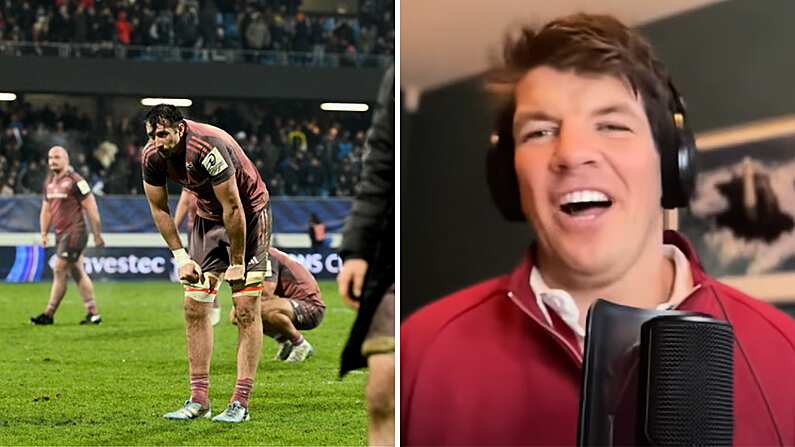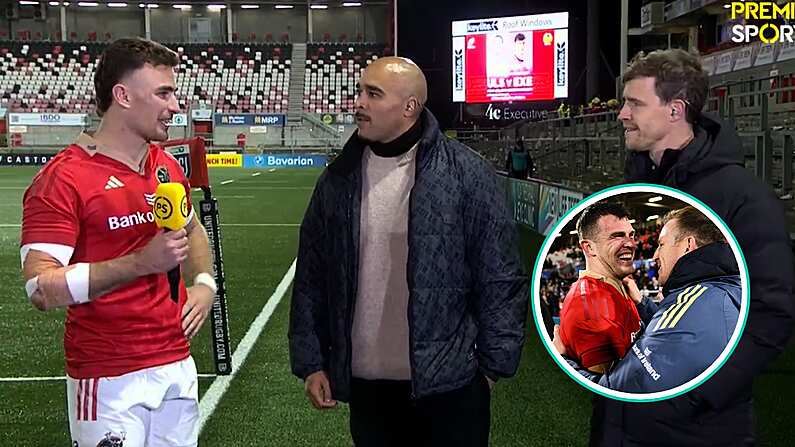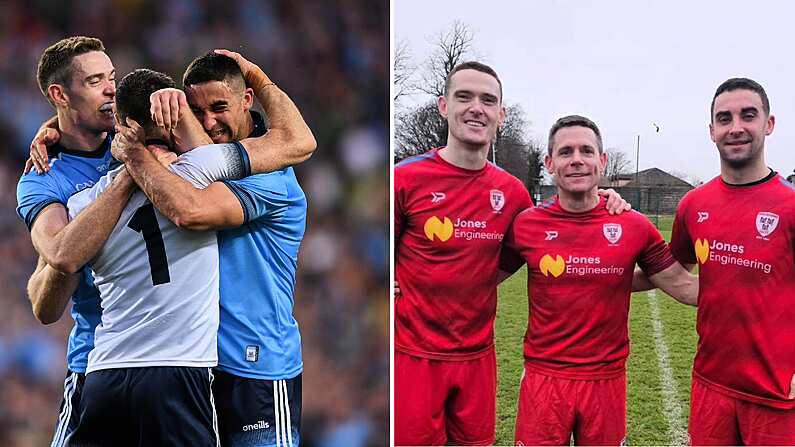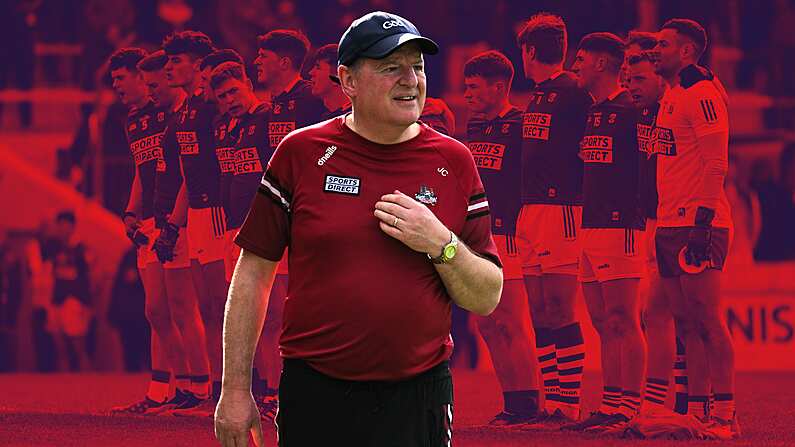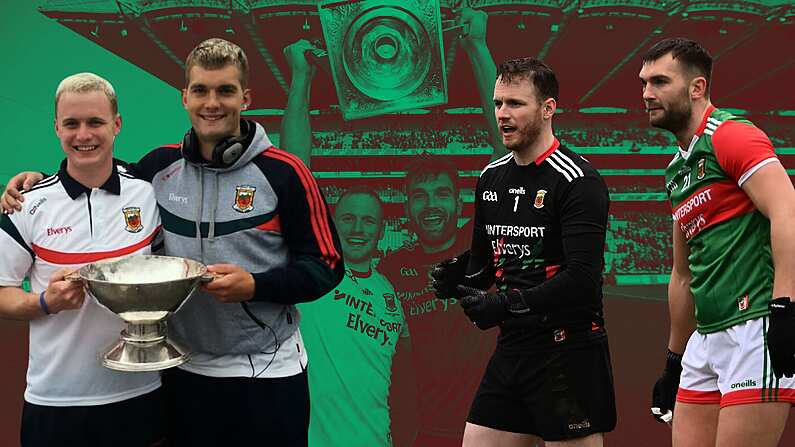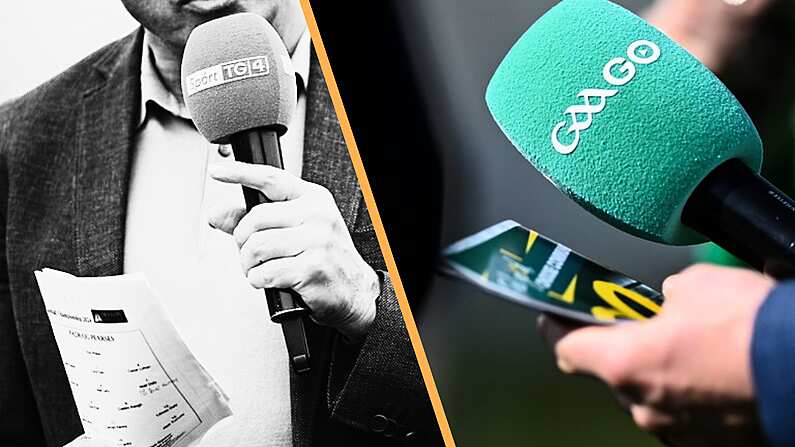Eoin Harrington reporting from Croke Park
"There was a huge appetite for change," Jim Gavin tells us in a suite high above the Croke Park pitch. "That's one thing that surprised us. People like what they see, but they want to see change."
Change is most certainly what those surveyed by the Football Review Committee have gotten.
Thursday saw the 12-strong FRC brief the Irish media in GAA HQ ahead of next week's interprovincial series - the first time their seven core rule changes will be put to the test in front of the watchful Irish public.
After a series of so-called "sandbox" games behind closed doors in recent months, four games in Croke Park next Friday and Saturday will see the following seven rules trialled publicly:
- 1v1 throw-ins
- Kick-outs must travel beyond the 40m arc
- Goalkeepers can only receive the ball from teammates inside the large rectangle or beyond the halfway line
- At least three players from each team must remain inside each half at all times
- A player can continue for a score if an advanced mark is taken; if no advantage is accrued, the free for the mark will be taken
- Scores over the bar from outside the 40m arc are worth two points; goals are worth four
- Players can immediately take a "solo and go" when fouled
The rule changes are dramatic to say the least and will fundamentally change the face of Gaelic football.
Speaking to Balls.ie on Thursday, chairman of the FRC Jim Gavin explained his core footballing ideology, which sounds almost like a mission statement for the committee.
I suppose I looked at it in a positive way.
[The people surveyed] want to see more kick passing, they want to see more high fielding, more goal scoring, more dynamic point scoring, more creativity - as opposed to what they didn't want to see, that's the way I view the world. ‘What can we do? What can we bring on?’ As opposed to ‘What do we want to stop?’
All of these things are about creating that vertical piece into the game. Yet you can still, if you want to have your 11 defenders be very compact and tight, you can do that or you can have your hybrid of man-to-man, so the defence can still do all of that as you currently can. You're trying to get the balance between all of them.
The media in attendance in Croke Park were given an utterly thorough run-through of the seven core proposals and the process that has brought us to this point.
Perhaps most evident of all was just how confident the committee are that these proposals will push Gaelic football into uncharted positive territory.
READ HERE: Relegation Looms For GAA Clubs Losing Players To High Profile Transfers
READ HERE: Zach Tuohy Gives Laois Fans The News That They Have Been Dying To Hear
Jim Gavin bullish with hope that FRC recommendations will succeed
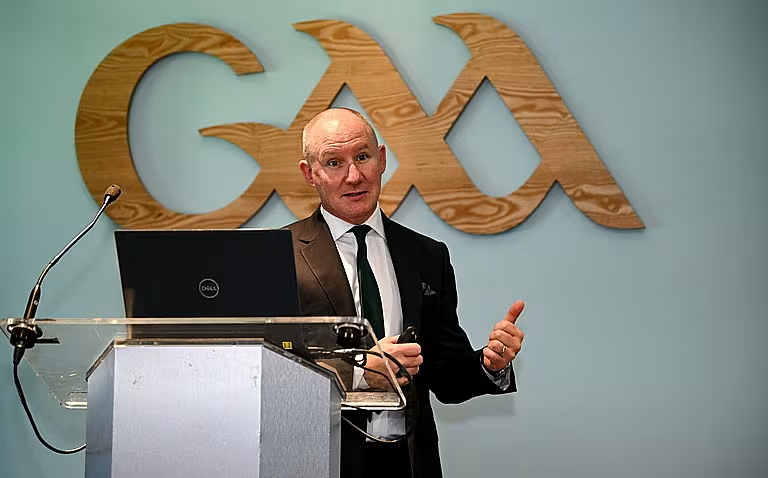
1
0 October 2024; GAA Football Review Committee chairperson Jim Gavin speaking during a briefing of the GAA Football Review Committee at Croke Park in Dublin. Photo by Seb Daly/SportsfileOver the past year, the Football Review Committee have engaged with stakeholders in a variety of areas to find the core changes they want to see made to Gaelic football.
Engagement with fans, players, coaches, administrators, officials, journalists and more finally culminated in those seven core changes being trialled in a series of "sandbox games." Seven in total have taken place and they have given Jim Gavin confidence that the rules will be received well when the public finally see them in action.
He is keen not to try and sway anyone before they see the new Gaelic football for themselves, saying "that type of confirmation bias is unfair." However, he shares one particular story from the last of the sandbox games between Cavan and Kildare that sums up much of the initial reaction from the lucky few to have caught a glimpse thus far.
We’ve seen see a lot more kick passing, a lot more shots on goal in the last game. It's beyond anything I've seen recently in the games that I've been involved in as a manager.
There was a gentleman in the stand up in Mullinahorne, he said it’s a long time since he's seen Cavan score 2-21. He meant it in a very positive way, so he was enthused by what he saw.
The new rules are hugely attack-driven and the committee suggest that much of the feedback thus far from those to play in the sandbox games has been positive - but Gavin also tells us that some backs have said that the proposed changes will also reinvigorate the art of defending.

10 October 2024; GAA Football Review Committee member Michael Murphy, second left, speaking during a briefing of the GAA Football Review Committee at Croke Park in Dublin. Photo by Seb Daly/Sportsfile
Not everything has been a perfect success, and Gavin says that the dramatically changed role of the goalkeeper is something that some shot-stoppers have not been hugely enthused by.
However, the six-time All-Ireland winning coach and his team are adamant that these rules work in harmony. Changing or removing one, they argue, would fundamentally alter another's effectiveness.
And some rules have had to be tweaked. One of the sandbox games saw a player wait for his opponents to retreat after the awarding of a free, before he proceeded to solo and go into acres of space. That prompted the clarification that a solo and go must be taken immediately.
Jim Gavin's immense knowledge of the history of this sport is evident from speaking to him, with the Dub referencing exploits from his playing days, and All-Ireland finals as far back as 1950 during his discussions with the media on Thursday.
He is adamant that change and pushing the sport forward is just as important as maintaining tradition.
When Maurice Davin sat down on the 17th January, 1885 and produced a full rulebook, we played into a soccer goal. That's what we did...they borrowed the Australian rules.
He took from them and they planted two posts 65 ft outside of the main post in case the lads were missing. They eventually said, ‘Ah forget about that,’ and then they eventually settled on the H-shape that we understand.
The game has always evolved, you used to have to throw the ball in from the sideline. There used to be 21 players lined up in the middle of the field for the throw-in and then they said, ‘Ah forget about that,’ to bring it down to, I think it was five, was it? And then there were two. The games have always evolved. The scoring system has remained constant, but the innovation has rapidly accelerated, I think, over the last decade and maybe a little before that.
Gavin is right to make note of the change to how scores will be rewarded in the proposed new rulebook.
Though the rest of the changes will change the way the game is played, perhaps none of the proposals are as fundamental to the nature of the sport as the removal of "three points for a goal, one for a point."
He stresses to us, however, that the game should not seem unfamiliar when fans flock to Croke Park for next weekend's Railway Cup - it will still be Gaelic football.
When you see it, you'll go, there's not too much different about that. That is Gaelic football. It's not Australian rules football. It's not rugby, rugby league or soccer. That's Gaelic football because you can get it, you can kick it, you can shoulder, you can hand pass, you can go backwards, you can go forwards, you kick it up.
So, it still speaks to, I think…believe [it] when you see it and I'd be very conscious of that particular point that we don't come up with something that people go, ‘That's not the game we grew up with, the game that I've seen.’

10 October 2024; The GAA Football Review Committee members, back row, from left, James Horan, Michael Meaney, Eamonn Fitzmaurice, Patrick Doherty, Shane Flanagan, Malachy O'Rourke and Alec McQuillan, front row, from left, Colm Nally, Michael Murphy, Colm Collins, chairperson Jim Gavin, and Seamus Kenny after a briefing of the GAA Football Review Committee at Croke Park in Dublin. Photo by Seb Daly/Sportsfile
Behind Jim Gavin on the Football Review Committee is an Avengers-style mishmash of the good and great from up and down the country. There are 11 members in total, comprised of ex-players, managers, and GAA officials.
Gavin says he is grateful to his committee for their tireless work this year in curating the seven core principles. There is a long road ahead yet for the 12-man committee - Gavin repeatedly insisted during Thursday's briefing that they are only at "half-time" in their mission to revitalise Gaelic football.
However, the head honcho is bullishly confident about the impact that the proposals could have, should they be put into action by Central Council.
It's going to be - and it's a bold thing to say - but this has the potential for [Gaelic football] to become one of the most exciting amateur games in the world, one of the most exciting field sports to watch.
Next weekend's Railway Cup fixtures in Croke Park will be the first step into the unknown as Gaelic football fans up and down the country get a first chance to see the rules in action.

